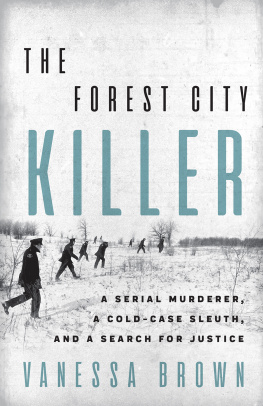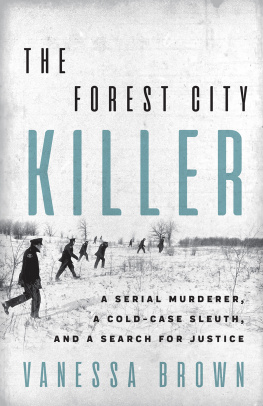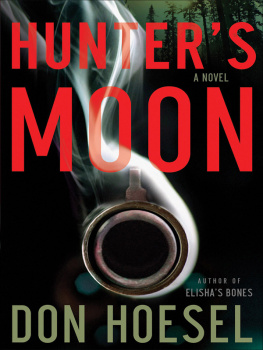
Ariana Franklin
Mistress of the Art of Death
The first book in the Mistress of the Art of Death series, 2007

Frontmatter map by Red Lion
TO HELEN HELLER,
MISTRESS OF THE ART OF THRILLERS

***

ENGLAND, 1171
Here they come. From down the road we can hear harnesses jingling and see dust rising into the warm spring sky.
Pilgrims returning after Easter in Canterbury. Tokens of the mitered, martyred Saint Thomas are pinned to cloaks and hats-the Canterbury monks must be raking it in.
Theyre a pleasant interruption in the traffic of carts whose drivers and oxen are surly with fatigue from plowing and sowing. These people are well fed, noisy, exultant with the grace their journey has gained them.
But one of them, as exuberant as the rest, is a murderer of children. Gods grace will not extend to a child-killer.
The woman at the front of the procession-a big woman on a big roan mare-has a silver token pinned to her wimple. We know her. Shes the prioress of Saint Radegunds nunnery in Cambridge. Shes talking. Loudly. Her accompanying nun, on a docile palfrey, is silent and has been able to afford only Thomas Becket in pewter.
The tall knight riding between them on a well-controlled charger-he wears a tabard over his mail with a cross showing that hes been on crusade, and, like the prioress, hes laid out on silver-makes sotto voce commentaries on the prioresss pronouncements. The prioress doesnt hear them, but they cause the young nun to smile. Nervously.
Behind this group is a flat cart drawn by mules. The cart carries a single object; rectangular, somewhat small for the space it occupies-the knight and squire seem to be guarding it. Its covered by a cloth with armorial bearings. The jiggling of the cart is dislodging the cloth, revealing a corner of carved gold-either a large reliquary or a small coffin. The squire leans from his horse and pulls the cloth straight so that the object is hidden again.
And heres a kings officer. Jovial enough, large, overweight for his age, dressed like a civilian, but you can tell. For one thing, his servant is wearing the royal tabard embroidered with the Angevin leopards and, for another, poking out of his overloaded saddlebag is an abacus and the sharp end of a pair of money scales.
Apart from the servant, he rides alone. Nobody likes a tax gatherer.
Now then, heres a prior. We know him, too, from the violet rochet he wears, as do all canons of Saint Augustine.
Important. Prior Geoffrey of Saint Augustines, Barnwell, the monastery that looks across the great bend of the River Cam opposite Saint Radegunds and dwarfs it. It is understood that he and the prioress dont get on. He has three monks in attendance, and also a knight-another crusader, judging from his tabard-and a squire.
Oh, hes ill. He should be at the processions front, but it seems his guts-which are considerable-are giving him pain. Hes groaning and ignoring a tonsured cleric whos trying to engage his attention. Poor man, theres no help for him on this stretch, not even an inn, until he reaches his own infirmary in the priory grounds.
A beef-faced citizen and his wife, both showing concern for the prior and giving advice to his monks. A minstrel, singing to a lute. Behind him theres a huntsman with spears and dogs-hounds colored like the English weather.
Here come the pack mules and the other servants. Usual riffraff.
Ah, now. At the extreme end of the procession. More riffraffish than the rest. A covered cart with colored cabalistic signs on its canvas. Two men on the driving bench, one big, one small, both dark-skinned, the larger with a Moors headdress wound round his head and cheeks. Quack medicine peddlers, probably.
And sitting on the tailboard, beskirted legs dangling like a peasant, a woman. Shes looking about her with a furious interest. Her eyes regard a tree, a patch of grass, with interrogation: Whats your name? What are you good for? If not, why not? Like a magister in court. Or an idiot.
On the wide verge between us and all these people (even on the Great North Road, even in this year of 1171, no tree shall grow less than a bowshots distance from the road, in case it give shelter to robbers) stands a small wayside shrine, the usual home-carpentered shelter for the Virgin.
Some of the riders prepare to pass by with a bow and a Hail Mary, but the prioress makes a show of calling for a groom to help her dismount. She lumbers over the grass to kneel and pray. Loudly.
One by one and somewhat reluctantly, all the others join her. Prior Geoffrey rolls his eyes and groans as hes assisted off his horse.
Even the three from the cart have dismounted and are on their knees, though, unseen at the back, the darker of the men seems to be directing his prayers toward the east. God help us all-Saracens and others of the ungodly are allowed to roam the highways of Henry II without sanction.
Lips mutter to the saint; hands weave an invisible cross. God is surely weeping, yet He allows the hands that have rent innocent flesh to remain unstained.
Mounted again, the cavalcade moves on, takes the turning to Cambridge, its diminishing chatter leaving us to the rumble of the harvest carts and the twitter of birdsong.
But we have a skein in our hands now, a thread that will lead us to that killer of children. To unravel it, though, we must first follow it backward in time by twelve months
TO THE YEAR 1170. A screaming year. A king screamed to be rid of his archbishop. Monks of Canterbury screamed as knights spilled the brains of said archbishop onto the stones of his cathedral.
The Pope screamed for said kings penance. The English Church screamed in triumph-now it had said king where it wanted him.
And, far away in Cambridgeshire, a child screamed. A tiny, tinny sound, this one, but it would reach its place among the others.
At first the scream had hope in it. Its a come-and-get-me-Im-frightened signal. Until now, adults had kept the child from danger, hoisted him away from beehives and bubbling pots and the blacksmiths fire. They must be at hand; they always have been.
At the sound, deer grazing on the moonlit grass lifted their heads and stared-but it was not one of their own young in fear; they went on grazing. A fox paused in its trot, one paw raised, to listen and judge the threat to itself.
The throat that issued the scream was too small and the place too deeply isolated to reach human help. The scream changed; it became unbelieving, so high on the scale of astonishment that it achieved the pitch of a huntsmans whistle directing his dogs.
The deer ran, scattering among the trees, their white scuts like dominoes tumbling into the darkness.
The scream was pleading now, perhaps to the torturer, perhaps to God, please dont, please dont, before crumbling into a monotone of agony and hopelessness.
The air was grateful when eventually the child fell silent and the usual night noises took over again; a breeze rustling through bushes, the grunt of a badger, the hundred screams of small mammals and birds as they died in the mouths of natural predators.
Next page









 ***
***